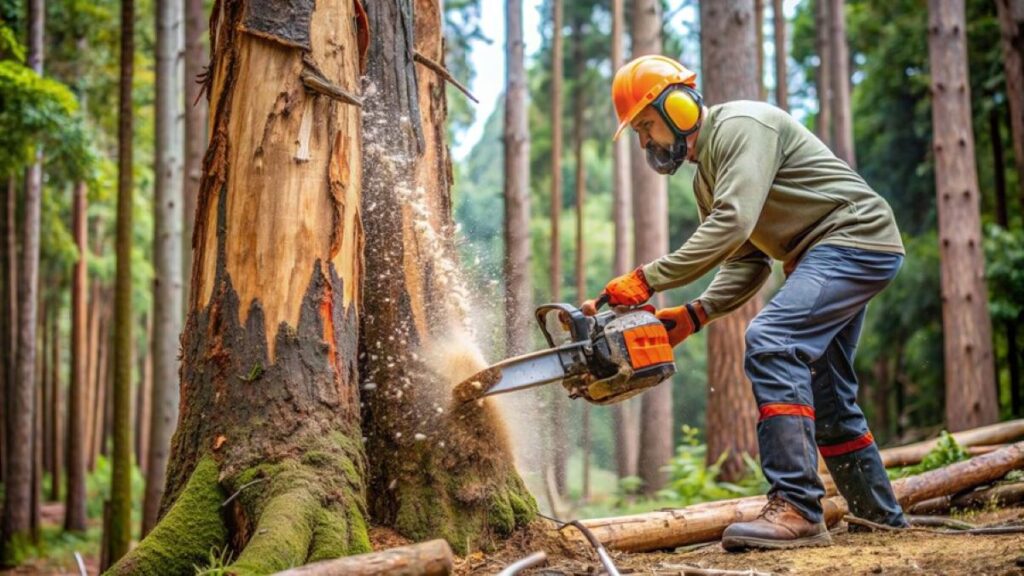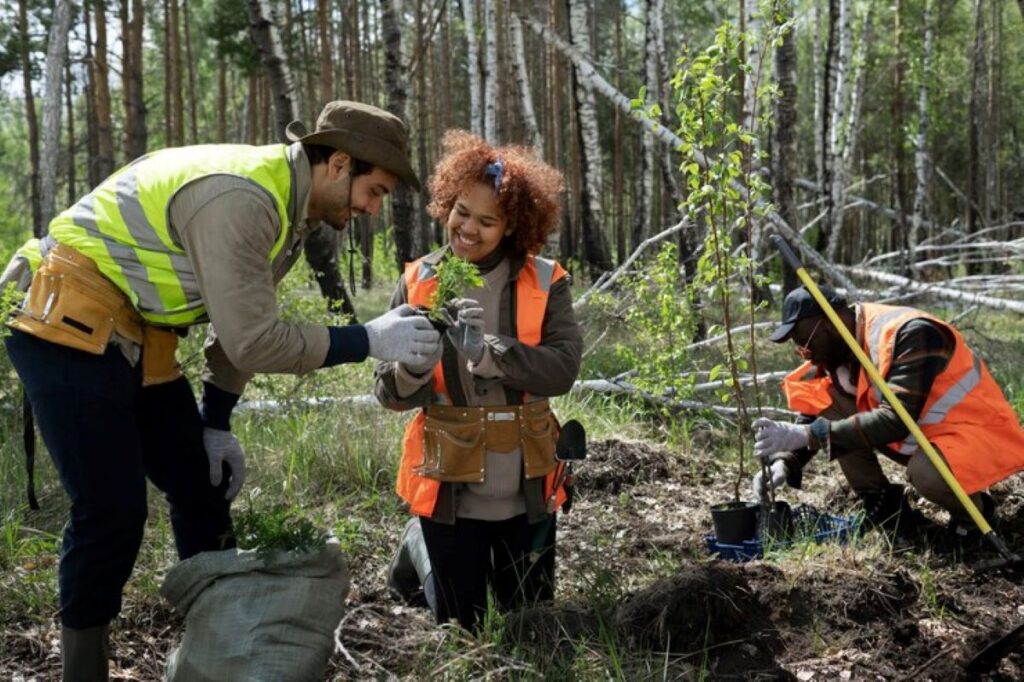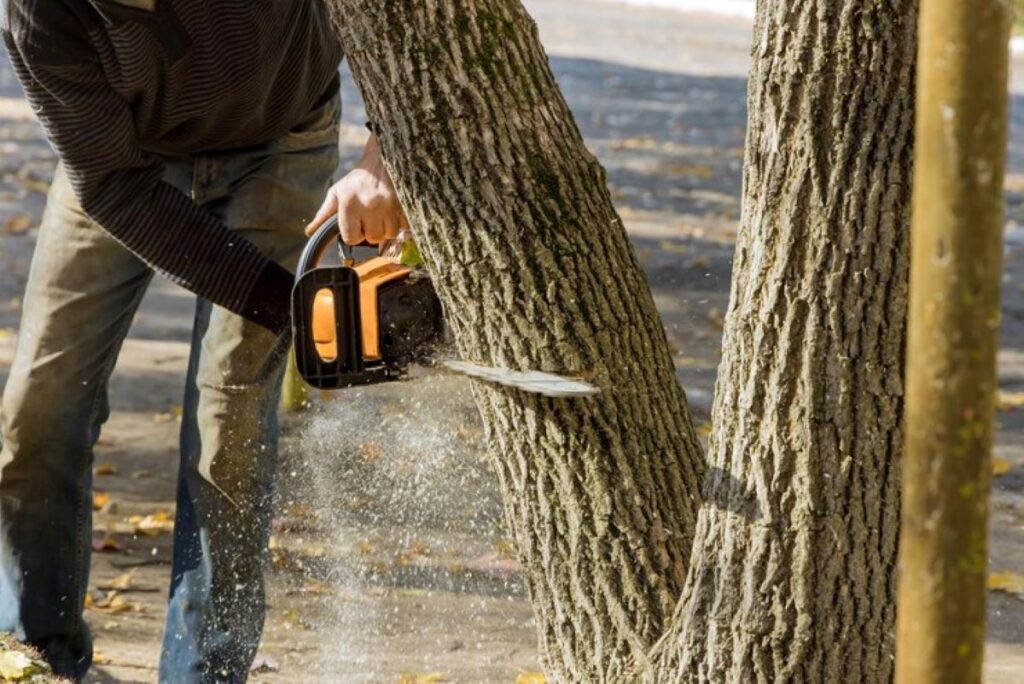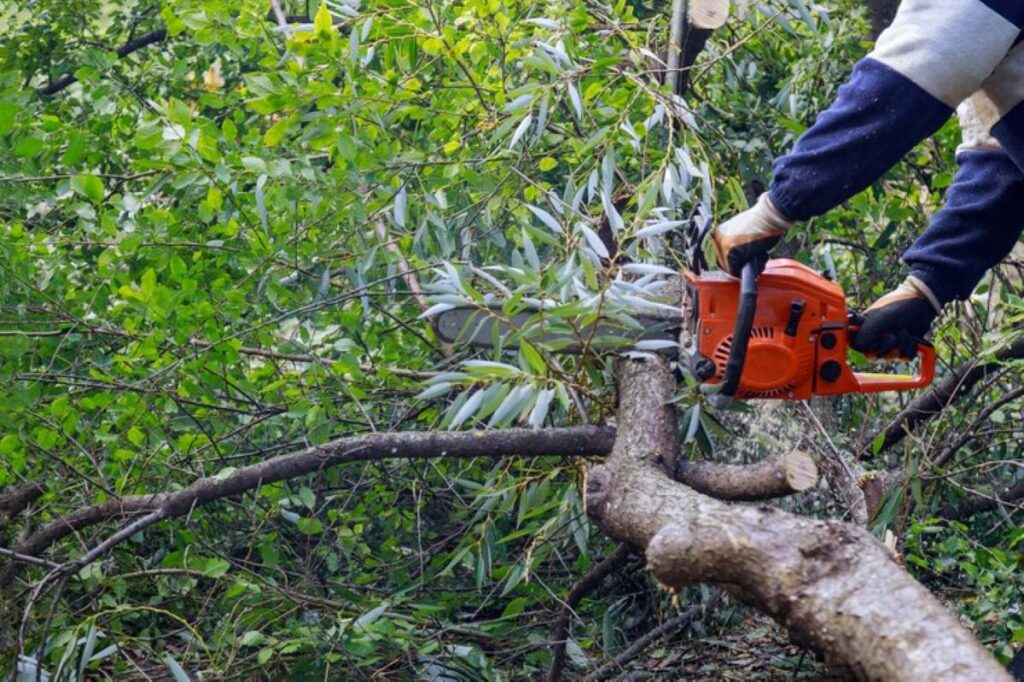Why Is Preventative Tree Care Important for Turramurra Homeowners?
Preventative tree care involves proactive maintenance practices designed to keep your trees healthy before probleProblems often arise when trees are neglected, but proactive maintenance can prevent costly damage and preserve your landscape’s beauty. This approach includes regular inspections, strategic pruning, proper watering, and monitoring for pests or diseases—all aimed at maintaining tree vitality and preventing emergencies. Partnering with professional tree services Turramurra experts ensures your trees receive the specialised care they need to thrive in local conditions.
The benefits of preventative tree care for Turramurra homeowners extend far beyond simple aesthetics:
- Regular tree health maintenance protects your property from storm damage caused by falling branches.
- It reduces liability risks in case of accidents involving your trees.
- It prevents the need for expensive emergency tree removal services.
- Healthy trees can increase property values by up to 20%.
- They provide essential shade during hot Australian summers.
- Additionally, they contribute to the local ecosystem.
This guide presents the Top 5 Preventative Tree Care Tips for Turramurra Homeowners—practical strategies you can implement to ensure your trees remain strong, beautiful, and safe for years to come. These evidence-based practices, supported by professional tree services Turramurra, will help you build a comprehensive care routine tailored to the unique climate and conditions of the Turramurra area.
1. How Can Regular Tree Inspections Help You Identify Potential Issues Early On?
Regular tree inspection catches problems before they become expensive emergencies. Early detection of disease, structural weaknesses, or pest activity allows for simple interventions that prevent tree failure, property damage, or complete tree loss.
Seasonal tree maintenance schedules reveal different aspects of tree health throughout the year:
- Spring inspections focus on new growth patterns and emerging pest populations, making it easier to spot abnormal leaf development or insect activity
- Summer checks assess tree vitality during peak growing season, identifying drought stress, nutrient deficiencies, or canopy thinning
- Autumn evaluations examine trees before winter dormancy, checking for structural issues that strong winds might exploit and ensuring proper preparation for cold months
- Winter assessments provide clear views of branch structure without foliage, revealing cracks, decay, or poor attachment points that leaves typically hide
Professional arborist evaluation brings trained expertise to your property. Certified arborists recognise subtle warning signs that untrained eyes miss—early fungal infections appearing as slight discolouration, minor cracks in bark indicating internal decay, or root plate movement suggesting instability. Their assessments include soil condition analysis, pest identification, and structural integrity testing.
Arborists document baseline tree health, creating reference points for tracking changes over time. They provide species-specific recommendations tailored to Turramurra’s climate conditions, noting which trees require closer monitoring during storm seasons or drought periods. This personalised approach ensures your inspection schedule matches your property’s unique needs rather than following generic advice.
2. How Do Pruning and Trimming Help Prevent Tree Damage?
1. Getting Rid of Weak Branches Before a Storm
Proactive pruning serves as your first line of defence against storm damage by eliminating vulnerable branches before severe weather strikes. Weak or dead limbs become projectiles during high winds, threatening your home, vehicles, and family members. The benefits of tree pruning extend beyond immediate safety—removing these hazardous branches prevents the domino effect of one falling limb damaging healthy sections of your tree.
2. Allowing Wind to Pass Through the Tree
Trimming dead branches creates a healthier canopy structure that allows wind to pass through rather than against your tree. Dense, unpruned canopies act like sails during storms, increasing the likelihood of uprooting or major limb failure. Strategic pruning opens up the crown, reducing wind resistance whilst improving air circulation throughout the tree.
3. Keeping Foliage Dry and Preventing Fungal Infections
This enhanced airflow plays a vital role in storm damage prevention by keeping foliage dry and reducing the conditions where fungal infections thrive. Moisture trapped in overcrowded branches creates breeding grounds for diseases like powdery mildew and anthracnose. Proper spacing between branches allows sunlight to penetrate deeper into the canopy, naturally inhibiting fungal growth.

4. Making Your Trees Look Better and Increasing Property Value
The aesthetic transformation following professional pruning cannot be understated. Well-maintained trees with balanced canopies enhance your property’s kerb appeal and market value. For fruit-bearing species, correct trimming techniques redirect the tree’s energy toward productive branches, resulting in:
- Larger, healthier fruit yields
- Better sunlight exposure for ripening
- Easier harvesting access
- Reduced pest harbourage in dead wood
Regular pruning schedules adapted to your tree species ensure these benefits compound year after year, creating resilient specimens that withstand Turramurra’s variable weather patterns.
3. Why Should You Choose Native or Climate-Adapted Trees for Your Turramurra Garden?
Native tree selection and climate-adapted species significantly reduce maintenance demands while boosting your trees’ natural defences against local pests and extreme weather events. Trees that have evolved in or adapted to Turramurra’s specific climate conditions require less intervention, fewer chemical treatments, and minimal supplemental watering once established.
Australian natives like Eucalyptus, Angophora, and Acacia species thrive in the local soil and rainfall patterns. These trees have developed natural resistance to common regional pests and diseases, making them ideal choices for homeowners seeking low-maintenance landscapes. Climate-adapted exotic species that match Turramurra’s conditions can also perform well, provided they’re suited to the area’s temperature ranges and moisture levels.
Proper tree planting techniques begin with understanding mature dimensions before you dig. A tree that seems perfect for your front garden today might grow to 15 metres tall with a root spread extending twice that distance. This growth can threaten:
- Building foundations and underground pipes
- Overhead power lines and telecommunications cables
- Driveways, pathways, and retaining walls
- Neighbouring properties and boundary fences
Research each species’ expected height and canopy width at maturity. Position trees at least 3-5 metres from structures, adjusting this distance based on the specific variety’s root behaviour. Some species develop aggressive root systems that seek out water sources, whilst others maintain more compact root zones.
These considerations form essential Top 5 Preventative Tree Care Tips for Turramurra Homeowners, helping you avoid costly removals or structural repairs years down the track.
See Also : When Do You Need Tree Removal Approval in St Ives
4. How Can Soil Health and Water Management Practices Improve Your Trees’ Well-Being?
Healthy soil creates the foundation for robust root systems that anchor trees and absorb essential nutrients. Trees growing in nutrient-rich, well-aerated soil develop stronger resistance to disease and environmental stress. The soil structure directly impacts water drainage, oxygen availability, and microbial activity—all critical factors for tree vitality.
The Benefits of Mulching
Mulching benefits extend far beyond aesthetics. A 75-100mm layer of organic mulch around your tree’s base acts as a protective barrier that:
- Retains soil moisture during Turramurra’s hot summer months
- Regulates soil temperature fluctuations between seasons
- Suppresses weed competition that steals nutrients from tree roots
- Breaks down gradually to enrich soil with organic matter
Keep mulch 100-150mm away from the trunk to prevent moisture buildup and potential rot.
The Importance of Efficient Tree Watering Practices
Efficient tree watering practices make the difference between shallow, vulnerable roots and deep, drought-resistant systems. Deep but infrequent watering encourages roots to grow downward rather than spreading near the surface. Apply water slowly to allow soil penetration to 300-450mm depth, which typically requires 40-60 litres per session for established trees.
Turramurra’s rainfall patterns demand adaptive watering schedules. During wet periods, reduce supplemental watering to prevent waterlogged conditions. In extended dry spells, increase frequency whilst maintaining the deep watering principle. Early morning watering minimises evaporation loss and allows foliage to dry before nightfall, reducing fungal disease risk.
Installing a simple soil moisture probe helps determine when trees genuinely need water rather than following arbitrary schedules.
5. What Strategies Can You Implement for Effective Pest and Disease Management in Your Trees?
Pest monitoring trees requires consistent vigilance to catch problems before they escalate. Early detection means you can address issues when treatments are simpler, less expensive, and more effective. Regular visual checks of leaves, bark, and branches help identify telltale signs like discolouration, unusual holes, or sticky residue that signal pest activity or disease presence.
Integrated Pest Management (IPM)
Integrated pest management (IPM) offers a comprehensive framework for protecting your trees without relying solely on chemicals. This approach prioritises prevention and uses multiple strategies working together:
- Cultural practices: strengthen your trees’ natural defences through proper watering, mulching, and maintaining appropriate spacing between plants to reduce humidity that encourages fungal growth
- Biological controls: introduce beneficial insects like ladybirds or lacewings that prey on harmful pests, creating a natural balance in your garden ecosystem
- Physical barriers: such as tree guards or sticky bands prevent pests from reaching vulnerable areas
- Targeted chemical treatments: serve as a last resort when other methods prove insufficient, applied precisely to minimise environmental impact
Timing Matters
The timing of your monitoring matters significantly. Spring brings new growth that attracts aphids and scale insects, whilst summer heat can stress trees and make them vulnerable to borers. Autumn leaf changes can mask early disease symptoms, making careful inspection essential.
The Role of Professional Arborists
Professional arborists bring trained eyes to spot subtle warning signs you might miss. They can identify specific pest species or disease pathogens and recommend the most appropriate IPM strategies for your Turramurra property’s unique conditions and tree species.

How Can You Get Started with a Successful Preventative Tree Care Routine?
Working with a certified arborist turns tree maintenance from guesswork into strategic care. These experts evaluate your property’s specific conditions—soil type, sun exposure, existing tree species, and potential dangers—to develop a preventative tree care plan Turramurra homeowners can confidently follow.
Professional arborists have knowledge that regular homeowners don’t have. They spot subtle signs of decline, suggest suitable species for new plantings, and set inspection schedules that match seasonal requirements. Their trained eye notices issues months before they turn into emergencies.
Take action today:
- Schedule an initial property assessment to establish baseline tree health
- Request a customised maintenance calendar with inspection dates
- Ask about ongoing monitoring services for high-value or at-risk trees
- Discuss emergency response protocols for storm damage
The Top 5 Preventative Tree Care Tips for Turramurra Homeowners work best when implemented systematically. Book your certified arborist visit now to protect your investment, safeguard your family, and enjoy thriving trees for decades ahead.
Preventative Tree Care for Turramurra Homeowners – FAQs
Preventative care keeps trees healthy, reduces storm damage risks, prevents costly emergency removals, increases property value, and supports the local ecosystem.
2. How do regular tree inspections help?
Scheduled inspections identify diseases, pests, and structural weaknesses early, allowing simple interventions before problems escalate into emergencies.
3. How does pruning and trimming prevent tree damage?
Pruning removes weak or dead branches, reduces wind resistance, improves airflow to prevent fungal infections, and enhances canopy aesthetics and property value.
4. Why choose native or climate-adapted trees?
Native or climate-adapted species thrive with minimal maintenance, resist local pests, and withstand Turramurra’s weather conditions better than non-adapted trees.
5. How does soil health and watering improve tree well-being?
Healthy, well-aerated soil supports strong roots, while deep, infrequent watering encourages drought-resistant growth and prevents surface root vulnerability. Mulching retains moisture and regulates soil temperature.
6. What strategies help manage pests and diseases?
Integrated Pest Management (IPM) combines cultural practices, biological controls, physical barriers, and targeted chemical treatments to prevent and treat infestations effectively.
7. When should you contact a professional arborist?
Engage certified arborists for inspections, pruning, pest or disease management, and planning preventative care to ensure expert guidance and long-term tree health.
8. How can homeowners implement a successful tree care routine?
Create a customised schedule with seasonal inspections, pruning, pest monitoring, soil management, and emergency protocols, ideally in consultation with a professional arborist.
9. What are the benefits of following a preventative tree care plan?
Trees remain healthy, property risks decrease, maintenance costs are lower, canopy aesthetics improve, and trees provide shade, ecological value, and increased property value over time.




